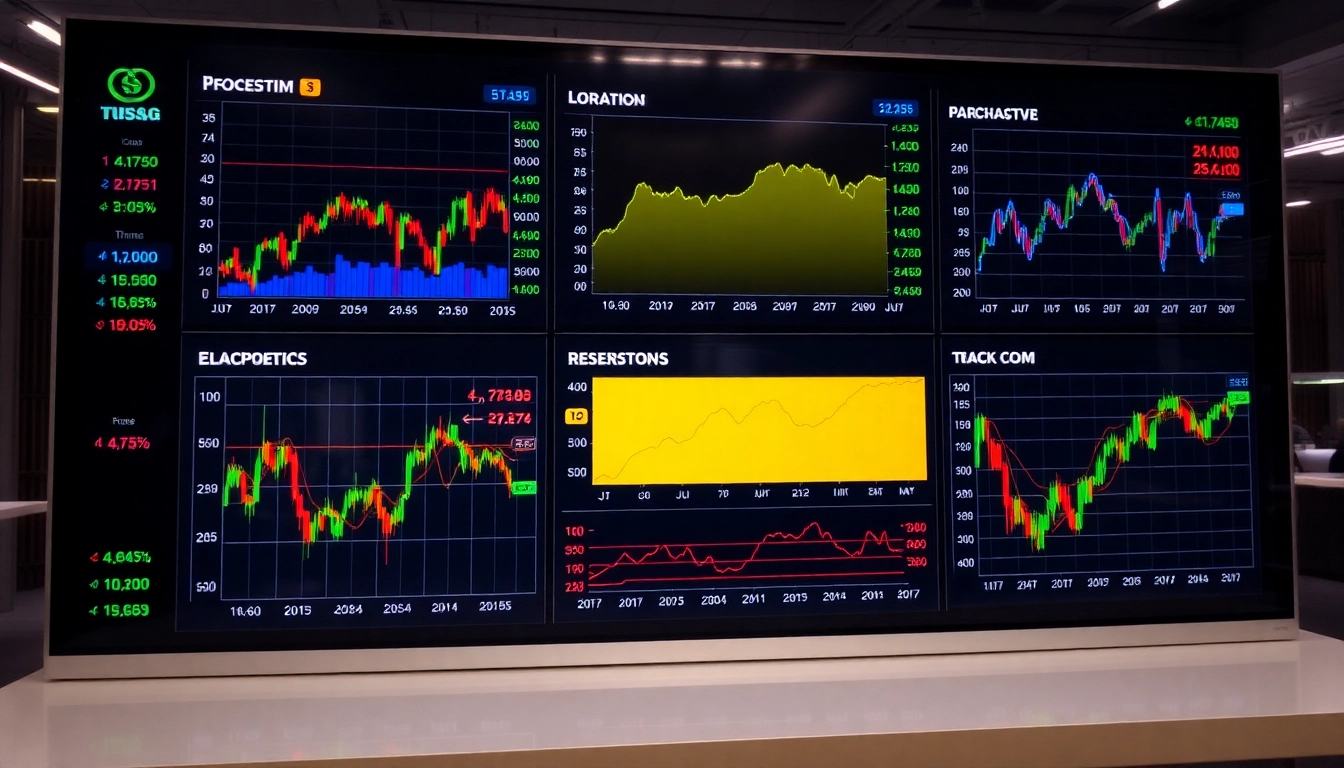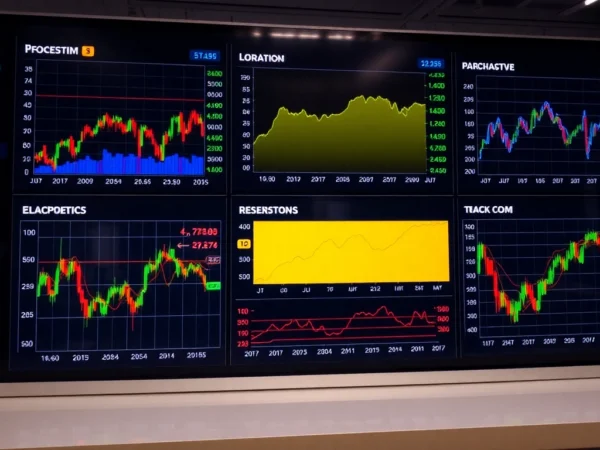Comprehensive Stocks and Shares Reporting: Insights, Trends, and Market Analysis
Understanding Stocks and Shares Reporting: Fundamentals and Significance
In the rapidly shifting landscape of global finance, stocks and shares reporting stands as a foundational pillar for investors, analysts, and market observers alike. Accurate and timely stock market reports provide essential insights into market health, investment opportunities, and economic trends. For those navigating this complex ecosystem, understanding the core principles behind stocks and shares reporting is critical. It not only informs smarter decision-making but also enhances strategic positioning in a competitive environment. To deepen your comprehension, explore the nuances of stock market reporting, its significance, and how modern tools and technologies are transforming this realm.
The Basics of Stock Market Reporting
Stock market reporting encompasses the gathering, analysis, and dissemination of data related to the performance of listed companies, indices, and overall market conditions. It involves tracking daily fluctuations, volume traded, price movements, earnings reports, dividend announcements, and macroeconomic indicators. These reports are produced by a combination of exchanges, financial news outlets, and independent analysis firms. They serve as the heartbeat of financial markets, offering a snapshot that captures both immediate market sentiment and broader economic trends.
Effective reporting relies on comprehensive data collection, which includes opening and closing prices, bid-ask spreads, market depth, and economic indicators such as inflation rates, employment figures, and geopolitical developments. This information is then compiled into reports that often feature charts, tables, and expert commentary, making complex data accessible and actionable. Digital platforms like Stocks and Shares Reporting now aggregate vast datasets in real time, empowering investors to interpret market signals instantaneously.
The Role of Shares Reporting in Investment Decisions
Shares reporting plays a pivotal role in shaping investment strategies. Accurate reports help investors identify undervalued stocks, assess risk levels, and analyze growth potential. For instance, detailed quarterly earnings reports reveal a company’s profitability trajectory, while technical analysis of share price charts can signal future movements. This combination of fundamental and technical data serves as ammunition for tailored investment decisions.
Furthermore, real-time reporting facilitates dynamic portfolio management, allowing investors to reallocate assets swiftly in response to market shifts. By understanding key metrics—such as earnings per share (EPS), price-to-earnings (P/E) ratios, and dividend yields—investors can evaluate whether shares are trading at fair value or premium. The importance of timely and transparent reporting cannot be overstated; it underpins market integrity and fosters investor confidence over the long term.
Key Metrics and Indicators in Stocks and Shares Data
Effective stock reports hinge on critical indicators that quantify various aspects of a company’s financial health and market sentiment. Some essential metrics include:
- Earnings Per Share (EPS): Measures profitability allocated to each share, crucial for valuation comparisons.
- Price-to-Earnings (P/E) Ratio: Indicates how much investors are willing to pay per dollar of earnings, helping assess overvaluation or undervaluation.
- Dividend Yield: Shows the return on investment via dividends relative to share price, attractive for income-focused investors.
- Market Capitalization: Represents the total market value of a company’s outstanding shares, signalling company size and market influence.
- Volume and Liquidity: The number of shares traded provides insights into market interest and ease of transaction execution.
Additionally, technical indicators such as moving averages, Relative Strength Index (RSI), and Bollinger Bands aid in short-term trading decisions, complementing fundamental analysis. Understanding and interpreting these metrics within reports provide a comprehensive picture of market dynamics.
Latest Trends and Developments in Stock Markets
Impact of Global Economic Factors on Stock Reporting
Global economic trends profoundly influence stock reports. Factors such as geopolitical tensions, monetary policy shifts, and international trade relations can cause significant volatility. Recent developments, like interest rate adjustments by central banks or the rollout of new trade agreements, are prominently reflected in market data. For example, slowing GDP growth in major economies often results in downward revisions in earnings forecasts, which are then incorporated into stock reports and investor outlooks.
Moreover, the surge of emerging markets and technological innovations introduces new variables into reporting frameworks, requiring analysts to adapt quickly. Sustainable investing trends and environmental, social, and governance (ESG) metrics are also increasingly integrated into stock analysis, impacting how data is reported and interpreted.
How Gold and Commodities Influence Market Reports
Gold and commodities serve as barometers of economic stability and inflation expectations. When stock markets experience turbulence, investors often flock to safe havens like gold, which can push its price to new records, as seen recently when gold soared past $3,500 an ounce. Such movements are reflected in market reports, influencing overall market sentiment.
Commodities prices also impact the earnings forecasts and valuation metrics of resource-dependent firms. For example, rising oil prices can increase operational costs for manufacturing companies, leading to downward revisions in profit estimates within reports. Conversely, a decline in commodity prices may bolster profit margins and support stock rallies.
Emerging Technologies Shaping Stock Data Analysis
The advent of artificial intelligence (AI), machine learning, and big data analytics is revolutionizing how stock data is analyzed and reported. AI-powered tools enable real-time pattern recognition, sentiment analysis, and predictive modeling, providing more nuanced and timely insights. For instance, AI algorithms can scan news feeds, social media, and economic indicators to forecast potential market moves.
Platforms utilizing these technologies offer enhanced visualization and scenario-testing capabilities, allowing investors to simulate different market conditions. As a result, stock reports are becoming more dynamic, precise, and actionable, helping investors to navigate volatile markets with higher confidence.
Analyzing Market Movements: Practical Strategies for Investors
Interpreting Stock Market Reports for Profitability
Practical interpretation begins with identifying the core drivers behind reported data. Consistent quarterly earnings growth, positive macroeconomic indicators, and favorable industry trends typically signal bullish opportunities. Conversely, declining revenues, rising debt levels, or geopolitical risks warrant caution.
Investors should also monitor ratios like P/E or Price-to-Book (P/B) to gauge valuation levels relative to historical averages and peer comparisons. By correlating this data with technical charts—such as trendlines or volume patterns—investors can enhance their decision-making process, increasing the likelihood of profitable entries and exits.
Technical vs Fundamental Analysis in Shares Reporting
Fundamental analysis examines underlying company financials and macroeconomic variables, while technical analysis focuses on price movements and trading volumes. Both approaches rely on stock reports, but their application differs.
Fundamental analysis is suited for long-term investors seeking intrinsic value, whereas technical analysis is often employed for short-term trading to exploit price patterns. Integrating these methods—called a hybrid approach—can provide a comprehensive perspective, maximizing market insights derived from stocks and shares reports.
Utilizing Real-Time Market Data for Investment Decisions
In today’s fast-paced markets, real-time data feeds enable investors to react swiftly to breaking news, economic releases, or sudden price swings. Sophisticated trading platforms aggregate live data, charts, and news updates, allowing for instantaneous analysis. For example, a sudden spike in trading volume or a sharp price movement in a report can trigger immediate buying or selling actions.
Adopting real-time data-driven strategies reduces latency, mitigates risks, and improves responsiveness—all essential for capitalizing on fleeting opportunities.
Challenges and Opportunities in Stocks and Shares Reporting
Addressing Data Accuracy and Transparency Issues
Ensuring the accuracy of stock reports remains a challenge. Discrepancies can arise from delayed disclosures, misreported earnings, or manipulated data. Regulatory bodies like the SEC enforce standards, but discrepancies still occur, eroding investor confidence.
Emerging solutions include blockchain technology, which offers immutable data records, and AI-driven verification tools that cross-check reports against multiple data sources, enhancing transparency and trust.
Regulatory Changes and Reporting Standards
Global regulators continually refine disclosure requirements to promote market fairness. The introduction of standardized reporting formats and enhanced audit trails aims to improve comparability across companies and regions. Recent reforms also emphasize ESG disclosures, reflecting investor demand for sustainable investing.
Adapting to evolving standards poses challenges for companies and analysts but ultimately results in more reliable and comprehensive stock reports.
Future Outlook: Innovations and Market Adaptations
The future of stocks and shares reporting lies in integrating big data, AI, and real-time analytics. Automated reporting systems will provide more granular insights, while investor platforms will offer personalized dashboards combining multiple data streams.
Additionally, increased regulatory focus on transparency will foster cleaner data environments, and advances in blockchain may revolutionize shareholder reporting accuracy. Embracing these innovations offers investors a competitive edge in deciphering complex market signals.
Tools and Resources for Improved Stocks and Shares Reporting
Top Platforms and Software for Market Analysis
A suite of advanced tools supports modern stock reporting efforts. Platforms like Bloomberg Terminal, Thomson Reuters Eikon, and TradingView provide extensive data, analytics, and visualization features. Emerging AI-focused platforms automate data aggregation and predictive analysis, reducing manual effort and increasing accuracy.
Choosing the right tools depends on specific investment goals—long-term portfolio management or active trading—and budget considerations.
Educational Resources to Enhance Market Reporting Skills
Continued education is vital for mastering stocks and shares reporting. Websites like Investopedia, Coursera, and edX offer courses on financial analysis, data interpretation, and trading strategies. Industry webinars, conferences, and expert blogs also provide up-to-date insights into emerging trends and best practices.
Building a solid knowledge base enables investors to interpret reports more effectively and make data-driven decisions confidently.
Leveraging AI and Data Analytics for Market Insights
Integrating AI and analytics tools transforms how investors approach market reports. Automated pattern recognition, sentiment analysis, and risk modeling uncover hidden opportunities and mitigate potential pitfalls. For example, AI can identify divergence signals between fundamental metrics and market price, indicating potential reversals.
Developing proficiency in these technologies provides a competitive advantage, allowing for proactive rather than reactive investment strategies.








